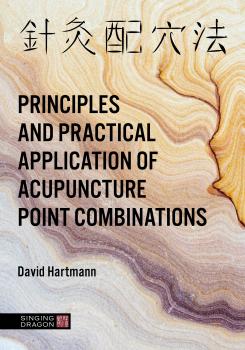Point Combinations – the Master-Key to Great Clinical Results
Locatie/Venue
Inleiding/Introduction
The 25 acupuncture point combinations are what the workshop is all about. Both theory and practical demonstration/participation are done on these point combinations.
- Local and distal points on the same channel.
- Yīn Yáng partners – Five Elements (Wǔ Xíng).
- Yīn Yīn partners (Six Divisions).
- Yáng Yáng partners (Six Divisions).
- Top and bottom.
- Corresponding.
- Distal and local.
- Left and right.
- Front and back.
- Whole body.
- Points with similar Pīn Yīn names/meanings.
- Original (Yuán) Yīn and Yáng.
- Crown and Third Eye.
- Triangle/Pyramid of power.
- Open the Four Gates.
- Three Regions/Powers – Heaven, Earth, Human (Tiān Dì Rén).
- ‘Three Yīn 6’s’.
- The Great Five.
- Figure Eight – Wǔ Shén/Five Spirits balancing.
- Zàng Fǔ/Sān Jiāo balance.
- Chain and Lock.
- Bright Foyer, Watchtower, Court, Fence and Shield.
- Back Shù Transporting, Front Mù Collecting, Yuán Source.
- Host/Guest – Yuán Source and Luò Connecting.
- Kidney Spirit Gate.
There will also be consistent clinical examples of point combinations using a variety of disorders. This will then feed into the hands-on component which will show plenty of different strategies discussed above as well as getting participants involved in practical activities to challenge their understanding of point combinations.

Inhoud/Content
Workshop goals and learning outcomes
The goals of the theory component of this workshop are:
- Introduce attendees to the under-valued concept of acupuncture point combinations.
- Explain how acupuncture point combinations work.
- Ensure attendees understand the Chinese medicine idea of ‘treating the person, not the disease’.
- Discuss the concept of using metaphorical ‘sticky forehead labels’ for patients/clients.
- Start the discussion on how to combine acupuncture points.
- Progress through the 25 acupuncture point combination methods dedicated to this two-day workshop starting with the basics, progressing through the intermediate concepts, before finishing with more complex ideas.
- Appreciate that a workshop of this size can only cover a small part of the point combination topic. But also, be confident in the knowledge that what is taught in this two-days will be instantly helpful in a clinical setting.
- Appreciate the value of the case studies discussed and how they are designed to tie in with the point combinations.
- Use the dedicated Q & A times to get any queries answered, and concepts consolidated. In a sense we are interacting in order to exchange knowledge and ideas.
The goals of the practical component of this workshop are:
- Designed to consolidate the theory learnt. Attendees aren’t given too many point combination concepts at once. After three or four concepts are discussed attendees get given time to consolidate that knowledge via practical demonstration and group work. Attendees are shown some of the point combinations by the lecturer before splitting up into group work. The lecturer will then wander around the room ensuring the techniques are performed correctly. This also allows for those attendees that are still confused to be given more personal attention.
- Ensuring that all practical work is done in small groups of three or four. This allows for everyone to bounce ideas off the rest of the group and the lecturer as he wanders around. There will also be an opportunity to practice some of the point combination concepts on yourself as well as on the lecturer.
- Getting involved in every aspect of practical work. Not all practical will involve needling. Attendees are also given the opportunity to consolidate their knowledge via group work which requires constructing acupuncture point combinations together and then present the findings to the rest of the class.
- Ensuring that all attendees feel confident in their ability by the end of the workshop.
Doelstellingen/Objectives
Workshop learning outcomes/statement of attainment:
By the end of the workshop attendees will be competent in:
- Understanding how acupuncture point combinations work.
- Treating the person and not the disease.
- Appreciating the concept of using metaphorical ‘sticky forehead labels’ for their patients.
- Understanding the 25 different acupuncture point combinations discussed regardless of whether they are basic, intermediate, or complex concepts.
- Readying themselves for an advanced point combination workshop in the future.
- Practically applying the 25 different point combinations on themselves, on fellow attendees, and perhaps even on the workshop lecturer.
- Applying these acupuncture point combination concepts in their clinical setting.
- Explaining what they are doing if/when asked by patients/clients and/or peers.
- Appreciating an entirely new concept that is rarely taught adequately in Chinese medicine institutions.
- Sharing this new found knowledge with others in the Chinese medicine field.
Video 1
Video 2
Toelatingsvoorwaarden/conditions of admission
-
Diploma Acupuncture (+ in accordance with the required legal prior medical education)
-
Acupunctuurdiploma (+ In overeenstemming met de vereiste wettelijke medische vooropleiding)
-
of PGAC 2 & PGAC 3 bij ICZO vzw
Datum/Data
- 30/9 - 01/10 - 02/10 in 2022
Lesuren/Timing
-
Friday : 14.00 - 21.00 h
-
Saturday : 09.00 - 17.30 h
-
Sunday : 09.00 -15.00 h
Docent

- Acupuncturist and Chinese medicine practitioner
- Masters of Acupuncture in 2009
- Book: 'The Principles and Practical Application of Acupuncture Point Combinations'
Accreditaties/Accreditation
Het aantal accreditatiepunten verschilt per beroepsverenging en wordt best nagezien bij de betreffende organisatie
BAF, EUFOM , LVNT, NVA , NWP , ZHONG ( punten)
Studiepunten/Credits
1.5 = Een studiepunt is een binnen de Vlaamse Gemeenschap aanvaarde internationale eenheid die overeenstemt met ten minste 25 en ten hoogste 30 uren voorgeschreven onderwijs-, leer- en examenactiviteiten en waarmee de studiebelasting van elke opleiding of elk opleidingsonderdeel wordt uitgedrukt
Cursusgeld/Fee
525 €
KMO-P
Kom je in aanmerking? zie https://www.iczo.be/nl/kmo-portefeuille
Studiegebied
Traditional Chinese Medicine Oosterse Gezondheidszorg
Voertaal/Language
English
Cursusmateriaal/Hand-outs
Syllabus wordt via het ICZO-platform aangereikt na betaling van het cursusgeld. Hiervoor wordt de cursist tijdig uitgenodigd (binnen de week voor de 1e lesdag)
Diversen/Miscellaneous
-
Hands-out to download
-
Continuous coffee break (coffee, tea, water) + sandwich lunch, soup, salad bar, coffee, tea, water)
-
Free underground parking for your car
-
De organisatie behoudt zich het recht voor om eventuele wijzigingen in het programma en planning aan te brengen.
Therapeutenlijst
Testimonials
-
Bynens Liesbet: zeer goede docent interessante inzichten en puntencombo's inspirerend & motiverend
-
Tuinstra Frank : Interessante combinaties van acupunctuurpunten geleerd, op basis van vele verschillende perspectieven. Ook een aantal minder gebruikte punten weer opnieuw aan de orde geweest en "ververst".
-
Eulaers Katelijne : perfecte cursus en lesgever op alle gebied dank je wel ICZO om dit mogelijk te maken
-
Kerkhoff Liesbeth ; Goede docent, goede organisatie, goede syllabus, praktijkgericht maar ook nieuwe theoretische inzichten . Heerlijk was dat deze docent ook gewoon aangaf dat niet alles lukt, maar veel. Hij is reëel en heeft humor.
-
Dr. Corthouts Ann : Docent met veel kennis en ervaring, veel kans tot vragen en oefenen op elkaar. Veel aandacht voor mentale en emotionele aspecten / aandoeningen. Aangename locatie en catering.
-
Peter Boonen: Unieke puntencombinaties van een docent met jaren ervaring.
